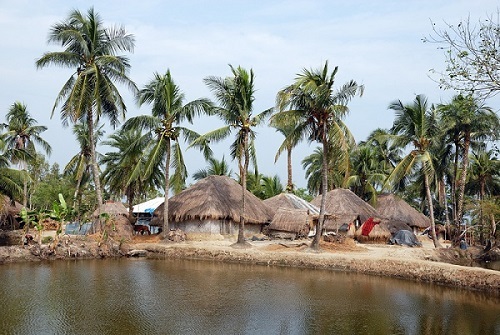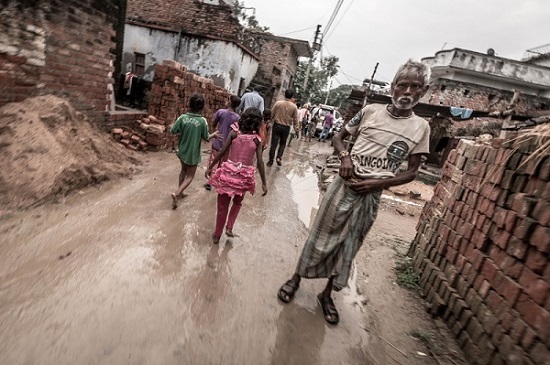

In the 20th century, in-depth empirical investigations of village social life gained popularity. The Indian village was seen as a closed and isolated system in the investigations by Munro, Metcalfe, Maine, and Baden-Powell. The village communities, he said, “are little republics, with basically everything they need inside themselves and almost independence from any international relations.” Hamlet as a society always emerges “unchanged, unshaken, and self-sufficient,” he continued, adding that “wars pass over it, governments come and go.”

Individuals make up the human world. To meet their wants, people interact with one another. They take on specific social positions and statuses as a result of this process, along with the associated responsibilities.
Their social behaviour has a pattern to it and is connected to particular standards and ideals that give them direction in social interactions. The result of social interaction in human existence is the emergence of numerous social units in society, such as groups, communities, associations, and institutions.
According to this scenario, social structure refers to the arrangement of interconnected statuses and roles within a society that makes up a stable system of interpersonal relationships.
Urban and rural areas share several aspects of daily life. They demonstrate interdependence, particularly in the areas of the economy, urban ward migration, and the reliance of townspeople or city dwellers on villages for various goods.
Families, kinship, caste, and villages in rural India are long-lasting social institutions. They cover all aspects of rural people's lives, including social, economic, political, and cultural ones.
The village has been a significant ideological category, one through which India has frequently been envisioned and represented in modern times, in addition to being an essential demographic and structural fact defining contemporary India.

A village is a group of people who live together and take care of each other's needs. Both a sense of oneness and mutual friendliness permeates their relationship.
The life of the village has a big impact on how villages evolve. The village is a fundamental institution in this way.
The villagers' daily lives reflect their belief in religion and a higher power.
Agriculture is a big occupation and is dependent on nature. Farmers revere natural forces. The joint family system is central to village life.
It was under British colonial rule that colonial administrators created an image of the Indian village that would have far-reaching ideological and political effects on how Indian society would be imagined in the future.
In the past, the village was connected to other villages nearby and society at large through migration, village exogamy, movement, inter-village commerce, caste relationships, and religious pilgrimage.
A village's inhabitants share a sense of identity. In terms of social, economic, political, and cultural spheres, they have intra-village links at the familial caste and class levels.
Research goals in the social sciences were significantly impacted by the rise of the so-called “new states” after decolonization in the post-war era.
The social base of the Asian peasant economy has been recognised as the village community. The relationship between the Indian “village studies'' and the Redfieklian concept of “peasant studies” is relatively obvious.
Agriculture and villages are intertwined in India and are essentially two sides of the same coin. In tribal cultures, which are expected to practise non-agricultural activities like hunting and gathering, this was the situation. So it makes sense to refer to rural India as agricultural India.
Lewis, who researched a village close to Delhi, claimed that the primary focus of their research was on the locals' perceptions of the need for housing, education, health care and newly established Panchayats.
According to Majumdar, unlike their economist counterparts, saw villages “in the context of the cultural life lived by the people” and the way “rural life was interlocking and interdependent,” which “baffled social engineers as it could not be geared to the landed economy.”
To evaluate the complex network of social interactions in a tiny universe over an extended time, sociologists must follow a certain methodology.
According to Deepankar Gupta, most villagers today are employed in non-agricultural enterprises.
According to Yogendra Singh, caste hierarchy and land ownership dominated the rural power structure in the 1950s and 1960s. This has changed as a result of democratic institutions, diminished caste assertion, and rising caste group rivalry.
The village's social and cultural dimensions maintain its identity and sense of attachment. Even if competition and conflict have grown significantly since then, according to Jan Bremen, there is still a sense of fictive solidarity among the peasants.
Indian villages are part of Indian societies because they reflect the cultures of the nation. In the twentieth century, sociologist starts studying Indian villages. And they mainly concentrated on the economy, culture, social relationships and beliefs of the villagers. Earlier villages were considered rural areas, but nowadays, villages are also developing. Agriculture was regarded as the main part of villages and nowadays, it is exploited. All the aspects of villages were covered by various research and are still ongoing.
Q1. What role did M.N. Srinivas play in promoting village studies?
Ans. By focusing his research on rural regions, M.N. Srinivas made a significant contribution to the advancement of village studies. He coordinated attempts to produce thorough ethnographic narratives of villages while conducting fieldwork in villages.
Q2. What were the features of Indian villages according to Marx?
Ans. According to Marx, Indians lived in communities before colonisation. Each community was in charge of a certain amount of agricultural land. Regardless of caste, every family exploited this land for their needs.
Q3. What does Gandhi consider a village to be?
Ans. Gandhi's idea of the perfect town or village Swaraj is unique in that it is a complete republic that is both dependent for many purposes where dependency is important and independent of its neighbours for its own needs.